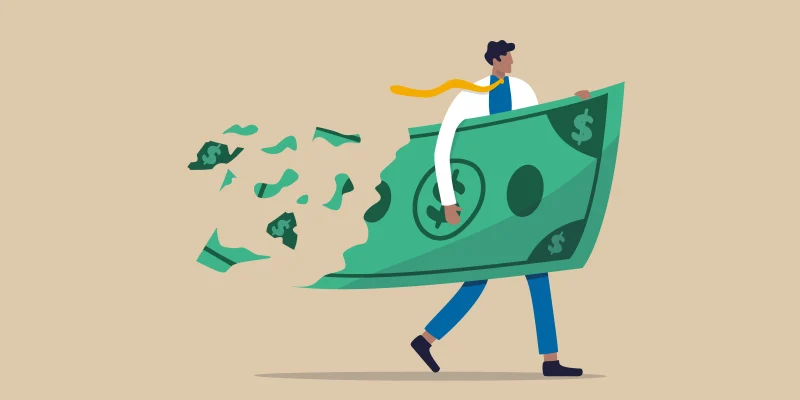Electrical stimulation is a promising therapy for nerve injuries, and studies show that patients treated with this modality have consistently demonstrated better recovery compared to those who have not, according to research presented at the 2025 American Association of Neuromuscular & Electrodiagnostic Medicine (AANEM) annual meeting.
“This is one of the emerging therapies for nerve injuries,” said Thomas J. Wilson, MD, MPH, co-director of the Center for Peripheral Nerve Surgery at Stanford University, in a discussion about the current clinical use of electrical stimulation in this setting. “This modality is the furthest along and we are beginning to use it clinically.”
However, he emphasized that the clinical use of electrical stimulation is only just emerging and the available data is limited.
In contrast to the central nervous system (CNS), injured nerves in the peripheral nervous system (PNS) can regenerate their lost axons when injured. However, recovery of function after peripheral nerve injuries is frequently less than optimal, particularly for injuries that are sustained at some distance from the denervated targets.The suboptimal healing is often due to the amount of time required for the injured nerves to regenerate over long distances and periods of time.
From the time of injury, changes begin to occur in the nerves, neuromuscular junction and muscle. “If functional nerve muscle is not reestablished, changes eventually become irreversible” Dr. Wilson explained. “This is thought to occur between 12 to 24 months following injury. The principle of recovery and repair is to establish reinnervation before irreversible changes occur.”
Ample evidence in animal models has demonstrated that low frequency electrical stimulation promotes axonal regeneration/outgrowth. The data show that this technique appears to help damaged nerves recover more effectively, especially when they are exposed to it shortly after injury.
While there is now clinical evidence to support the use of electrical stimulation, the protocols continue to evolve. “I think we are still in the early stages of trying to develop the evidence and what protocols are going to be used,” said Dr. Wilson. “We are now trying to develop the evidence.”
Human clinical trials are still limited, but Dr. Wilson discussed the findings of three trials that used electrical stimulation as an adjunct to surgery.
In the first study, postsurgical electrical stimulation was evaluated in 31 patients with severe cubital tunnel syndrome. Control patients underwent surgery and sham stimulation, and patients in the stimulation group received 20 Hertz (Hz) for one hour post operatively. They were then assessed annually for three years, and at that time, functional and physiological outcomes showed significantly greater improvements in the group that had received electrical stimulation.
“We see improvements in the stimulation group over a two-to-three-year period compared to controls,” said Dr. Wilson. “The outcomes were similar at 1 year and it wasn’t until the 2-to-3-year mark that we tend to see divergence in the outcomes.”
The second study, similar in design, compared the use of postsurgical electrical stimulation to a control group in patients who underwent carpel tunnel release surgery. Immediately following the procedure, patients in the experimental group received 20 Hz for one hour of electrical stimulation. At one year, some of the metrics began to show a difference compared to the control group. Seeing a difference at one-year contrasts with the first study, Dr. Wilson pointed out, but in this population, the electrical stimulation had a shorter distance to target, which could account for the earlier benefit. “But what doesn’t pan out is when we look at functional outcomes,” said Dr. Wilson. “Electrically speaking, the outcomes were better, but we don’t see any difference for patient outcomes.”
While the two previous studies looked at electrical stimulation in patients with compressive neuropathies, the third paper evaluated patients who received the procedure following digital nerve transection. Patients were randomized to receiving either 1 hour of 20Hz continuous electrical stimulation or sham stimulation and were followed monthly for 6 months. The electrical stimulation group did better on all assessments, compared with the control group.
“We have limited data suggesting that electrical stimulation might be promoting nerve recovery,” said Dr. Wilson, noting that based on animal data, studies are now moving towards a shorter stimulation time. “We still need more data regarding the benefits, including validation at other centers as two of the three studies came out of the same center.”
There are several studies ongoing now, evaluating electrical stimulation as an adjunct to surgery, evaluating different stimulation times and different endpoints. Dr. Wilson also pointed out that there are commercially available stimulators, but their FDA indication is for pain. “But they may help nerve recovery and can be used right now,” he said. “But we are still a long way from having conclusive data as to what the best parameters are and how to deliver it.”
Dr. Wilson has no financial disclosures or conflicts of interest
New Frontiers in Nerve Injury: Emerging and Experimental Therapeutics. Presented at: 2025 American Association of Neuromuscular & Electrodiagnostic Medicine (AANEM) annual meeting; October 29-November 2, 2025; San Francisco
Wong JN, Olson JL, Morhart MJ, Chan KM. Electrical stimulation enhances sensory recovery: a randomized controlled trial. Ann Neurol. 2015 Jun;77(6):996-1006.
Gordon T, Amirjani N, Edwards DC, Chan KM. Brief post-surgical electrical stimulation accelerates axon regeneration and muscle reinnervation without affecting the functional measures in carpal tunnel syndrome patients. Exp Neurol. 2010 May;223(1):192-202
Power, H, Morhart, M, Olson, J et al. Postsurgical Electrical Stimulation Enhances Recovery Following Surgery for Severe Cubital Tunnel Syndrome: A Double-Blind Randomized Controlled Trial. Neurosurgery 2020; 86:769-777
Image by Chris Madden / Getty Images





